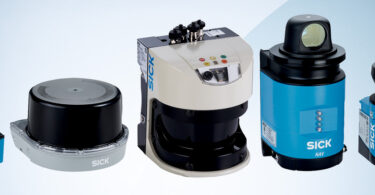Calculations for your encoder needs
One of the most important factors to consider before choosing an encoder for your application is the resolution. The encoder resolution will be calculated differently based on whether you are using an incremental or an absolute encoder.
The short video below explains how the resolution is calculated for these two encoder types.
For incremental encoders, when the shaft is turned, a square wave is output. The number of pulses is known as pulses per revolution (ppr).
In contrast, absolute encoders have a unique positional value based on the position of the shaft — either for a singleturn or multiturn encoder. This is based on the number of lines for one revolution. This is typically described in bits. For example, 12 bits is equivalent to 2 ^12, or 4,096 lines per revolution.
This may alternatively be written in terms of singleturn and multiturn. For example, a revolution of 12 x 12 indicates that the first number is the singleturn portion and the second number is the multiturn portion.





